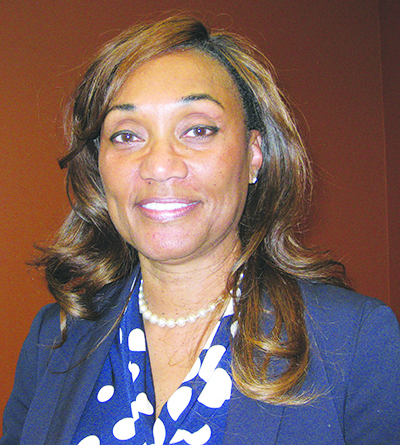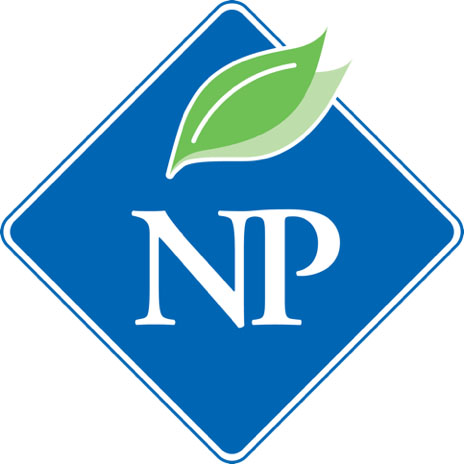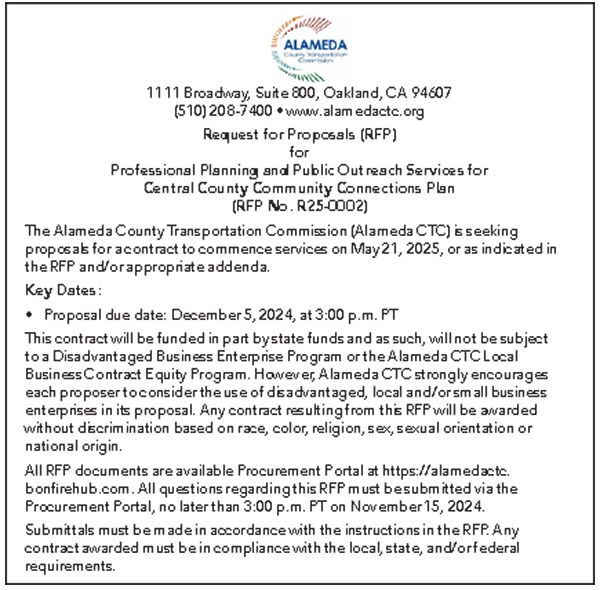Health
Racial Disparities in End-of-life Care; Many Are Unaware of Hospice Care (Part 2)
For those nearing death, hospice care can help alleviate the pain, discomfort, and suffering that often accompanies the dying process. But for many African-Americans, “hospice” is misunderstood and is equated with “hastening death” or “giving up.”
Many are either unaware of hospice care or lack a clear understanding of what hospice is. Keeping hope alive is a strong part of African-American culture and surviving difficult times. Even though there’s little chance of full recovery, African Americans are more likely than whites to choose life-sustaining measures.
Far fewer African Americans utilize hospice compared to whites. Among Medicare beneficiaries who died in 2010, 45.8 percent of whites used hospice compared to 34 percent of African Americans.
Survival at all costs is part of African-American culture that can be traced back to the days of slavery. The country’s long history of racism and poverty included unequal access to medical care. To this day, some suspect that the health care system is limiting their treatment options.

Rev. Cynthia Carter Perrilliat. Photo courtesy JoAnn Mar.
Rev. Cynthia Carter Perrilliat, a minister at the Allen Temple Baptist Church in East Oakland, often encounters this fear among her congregants, who she says ask: “Why should I trust that you’re going to do the right thing for me?”
“Statistics will tell you that in communities of color, particularly African-American communities, they always say ‘give me everything,’” says Perrilliat. “You know, all the treatment that there is, because typically we don’t get the treatment we need.”
Racial disparities and discrimination have long been part of America’s health care system from birth to death. Infant mortality rates are twice as high for African-Americans compared to whites. White Americans live 3.5 years longer than African-Americans.
Research further indicates that ethnic minorities are less likely to receive even routine …medical procedures and experience a lower quality of health services. At the end of life, racial disparities persist. Significantly fewer African-Americans, Asians, and Latinos enrolled in hospice compared to whites.
Rev. Perrilliat had her own positive experience with hospice many years ago when her father died of cancer. She realized that churches needed to become more active in end-of-life care. Seventy percent of African Americans are religious and churches are highly respected institutions.
“The faith community is one of the last bastions of resource out there where there is still some level of trust,” said Perrilliat.
In 2014, Perrilliat partnered with five churches, and started the Alameda County Care Alliance, a faith-based, non-profit providing critical support for predominantly African-American adults with advanced illness and their caregivers. It’s considered the nation’s first community-faith-health partnership of its kind. Ministers and faith leaders are trained to help their congregants prepare for the end of life and provide spiritual guidance and support related to their advanced illness.
At the heart of the ACCA’s program is its navigation system. Community care navigators are trained to provide support and connect participants with needed resources such as transportation, meals, medical services, and hospice care.
“You have to have a heart for people, a desire to help,” said Alexis Owens, one of the ACCA’s navigators, “We want to make sure they know we’re actively listening. We want them to trust us.”
In the last four years, the ACCA’s hub churches have grown from five to 14. Its medical partners include Kaiser Permanente, U.C. Davis School of Nursing, and the Public Health Institute. “We’re well over 2,500, close to 3,000 plus folks now in our third year,” said Perrilliat, “So there’s no lack of need, I promise you.” The ACCA hopes to reach beyond the African-American community and expand throughout the Bay Area. Major cities such as San Francisco, Los Angeles, Chicago, and New York have expressed interest in replicating the ACCA’s navigator system.
If the model spreads nationwide, it could go a long way in reducing racial disparities in end of life care. This story is part of a series examining racial disparities in accessing hospice and comfort care at the end of life. JoAnn Mar’s report was produced as a project for the USC Annenberg Center for Health Journalism’s 2018 California Fellowship.
Activism
OPINION: Your Voice and Vote Impact the Quality of Your Health Care
One of the most dangerous developments we’re seeing now? Deep federal cuts are being proposed to Medicaid, the life-saving health insurance program that covers nearly 80 million lower-income individuals nationwide. That is approximately 15 million Californians and about 1 million of the state’s nearly 3 million Black Californians who are at risk of losing their healthcare.

By Rhonda M. Smith, Special to California Black Media Partners
Shortly after last year’s election, I hopped into a Lyft and struck up a conversation with the driver. As we talked, the topic inevitably turned to politics. He confidently told me that he didn’t vote — not because he supported Donald Trump, but because he didn’t like Kamala Harris’ résumé. When I asked what exactly he didn’t like, he couldn’t specifically articulate his dislike or point to anything specific. In his words, he “just didn’t like her résumé.”
That moment really hit hard for me. As a Black woman, I’ve lived through enough election cycles to recognize how often uncertainty, misinformation, or political apathy keep people from voting, especially Black voters whose voices are historically left out of the conversation and whose health, economic security, and opportunities are directly impacted by the individual elected to office, and the legislative branches and political parties that push forth their agenda.
That conversation with the Lyft driver reflects a troubling surge in fear-driven politics across our country. We’ve seen White House executive orders gut federal programs meant to help our most vulnerable populations and policies that systematically exclude or harm Black and underserved communities.
One of the most dangerous developments we’re seeing now? Deep federal cuts are being proposed to Medicaid, the life-saving health insurance program that covers nearly 80 million lower-income individuals nationwide. That is approximately 15 million Californians and about 1 million of the state’s nearly 3 million Black Californians who are at risk of losing their healthcare.
Medicaid, called Medi-Cal in California, doesn’t just cover care. It protects individuals and families from medical debt, keeps rural hospitals open, creates jobs, and helps our communities thrive. Simply put; Medicaid is a lifeline for 1 in 5 Black Americans. For many, it’s the only thing standing between them and a medical emergency they can’t afford, especially with the skyrocketing costs of health care. The proposed cuts mean up to 7.2 million Black Americans could lose their healthcare coverage, making it harder for them to receive timely, life-saving care. Cuts to Medicaid would also result in fewer prenatal visits, delayed cancer screenings, unfilled prescriptions, and closures of community clinics. When healthcare is inaccessible or unaffordable, it doesn’t just harm individuals, it weakens entire communities and widens inequities.
The reality is Black Americans already face disproportionately higher rates of poorer health outcomes. Our life expectancy is nearly five years shorter in comparison to White Americans. Black pregnant people are 3.6 times more likely to die during pregnancy or postpartum than their white counterparts.
These policies don’t happen in a vacuum. They are determined by who holds power and who shows up to vote. Showing up amplifies our voices. Taking action and exercising our right to vote is how we express our power.
I urge you to start today. Call your representatives, on both sides of the aisle, and demand they protect Medicaid (Medi-Cal), the Affordable Care Act (Covered CA), and access to food assistance programs, maternal health resources, mental health services, and protect our basic freedoms and human rights. Stay informed, talk to your neighbors and register to vote.
About the Author
Rhonda M. Smith is the Executive Director of the California Black Health Network, a statewide nonprofit dedicated to advancing health equity for all Black Californians.
Activism
OPINION: Supreme Court Case Highlights Clash Between Parental Rights and Progressive Indoctrination
At the center of this controversy are some parents from Montgomery County in Maryland, who assert a fundamental principle: the right to shield their children from exposure to sexual content that is inappropriate for their age, while also steering their moral and ethical upbringing in alignment with their faith. The local school board decided to introduce a curriculum that includes LGBTQ+ themes — often embracing controversial discussions of human sexuality and gender identity.

By Craig J. DeLuz, Special to California Black Media Partners
In America’s schools, the tension between parental rights and learning curricula has created a contentious battlefield.
In this debate, it is essential to recognize that parents are, first and foremost, their children’s primary educators. When they send their children to school — public or private — they do not surrender their rights or responsibilities. Yet, the education establishment has been increasingly encroaching on this vital paradigm.
A case recently argued before the Supreme Court regarding Maryland parents’ rights to opt out of lessons that infringe upon their religious beliefs epitomizes this growing conflict. This case, Mahmoud v. Taylor, is not simply about retreating from progressive educational mandates. It is fundamentally a defense of First Amendment rights, a defense of parents’ rights to be parents.
At the center of this controversy are some parents from Montgomery County in Maryland, who assert a fundamental principle: the right to shield their children from exposure to sexual content that is inappropriate for their age, while also steering their moral and ethical upbringing in alignment with their faith. The local school board decided to introduce a curriculum that includes LGBTQ+ themes, often embracing controversial discussions of human sexuality and gender identity. The parents argue that the subject matter is age-inappropriate, and the school board does not give parents the option to withdraw their children when those lessons are taught.
This case raises profound questions about the role of public education in a democratic society. In their fervent quest for inclusivity, some educators seem to have overlooked an essential truth: that the promotion of inclusivity should never infringe upon parental rights and the deeply held convictions that guide families of different faith backgrounds.
This matter goes well beyond mere exposure. It veers into indoctrination when children are repeatedly confronted with concepts that clash with their family values.
“I don’t think anybody can read that and say: well, this is just telling children that there are occasions when men marry other men,” noted Justice Samuel Alito. “It has a clear moral message, and it may be a good message. It’s just a message that a lot of religious people disagree with.”
Justice Amy Coney Barrett raised a crucial point, noting that it is one thing to merely expose students to diverse ideas; it is quite another to present certain viewpoints as indisputable truths. By framing an ideology with the certainty of “this is the right view of the world,” educators risk indoctrination rather than enlightenment. This distinction is not merely academic; it speaks to the very essence of cultivating a truly informed citizenry.
Even Justice Elena Kagan expressed concern regarding the exposure of young children to certain materials in Montgomery County.
“I, too, was struck by these young kids’ picture books and, on matters concerning sexuality, I suspect there are a lot of non-religious parents who weren’t all that thrilled about this,” she said.
Justice John Roberts aptly questioned the practicality of expecting young children to compartmentalize their beliefs in the classroom.
“It is unreasonable to expect five-year-olds, still forming their worldviews, to reconcile lessons that conflict fundamentally with the teachings they receive at home,” he said.
As was noted in my previous commentary, “The Hidden Truth In The Battle Over Books In American Schools”, what lies at the heart of these debates is a moral disconnect between the values held by the majority of Americans and those promoted by the educational establishment. While the majority rightly argue that material containing controversial content of a sexual nature should have no place in our children’s classrooms, the education establishment continues to tout the necessity of exposing children to such content under the guise of inclusivity. This disregards the legitimate values held by the wider community.
Highlighted in this case that is before the Supreme Court is a crucial truth: parents must resolutely maintain their right to direct their children’s education, according to their values. This struggle is not simply a skirmish; it reflects a broader movement aimed at reshaping education by privileging a state-sanctioned narrative while marginalizing dissenting voices.
It is imperative that we assert, without hesitation, that parents are — and must remain — the primary educators of their children.
When parents enroll a child in a school, it should in no way be interpreted as a relinquishment of parental authority or the moral guidance essential to their upbringing. We must stand firm in defending parental rights against the encroaching ideologies of the education establishment.
About the Author
Craig J. DeLuz has almost 30 years of experience in public policy and advocacy. He has served as a member of The Robla School District Board of Trustees for over 20 years. He also currently hosts a daily news and commentary show called “The RUNDOWN.” You can follow him on X at @CraigDeLuz.
Activism
California Observes Third Annual Black Health Advocacy Week
On May 4, 2023, the California Assembly unanimously passed ACR 53, enacting BHEAW every first week of May. “The life expectancy at birth for Black Californians is 76.2 years of age, which is five years shorter than the state average and the lowest life expectancy of all racial and ethnic groups in California,” said Weber in a statement.

By Bo Tefu, California Black Media
California’s third annual Black Health Equity Advocacy Week (BHEAW), observed from May 5-9, reaffirmed the commitment of the state and advocates to address systemic health disparities affecting Black communities.
Assemblymember Akilah Weber (D-San Diego), who is a medical doctor and chair of the California Legislative Black Caucus (CLBC), authored the resolution that created BHEAW — the first statewide initiative of its kind focused on advancing Black health equity.
On May 4, 2023, the California Assembly unanimously passed ACR 53, enacting BHEAW every first week of May.
“The life expectancy at birth for Black Californians is 76.2 years of age, which is five years shorter than the state average and the lowest life expectancy of all racial and ethnic groups in California,” said Weber in a statement.
“This disparity is a stark reminder of the systemic and institutional factors that contribute to health inequities in communities of color,” she added.
The California Black Health Network (CBHN) led this year’s events, combining advocacy, training, and public engagement to amplify the urgency of closing health gaps for Black Californians.
The theme of this year’s observance was “We’ve Got the Power.”
“CBHN is calling on our community to step up, speak out, and get involved. Increasing the participation of Black Californians in policymaking — across the health industry and public sector — is one of the most powerful ways we can drive change and save lives,” reads a message from the organization promoting this year’s BHEAW.
“Policy change is within your power and this week we’re in Sacramento with our Health Equity Advocacy Training (HEAT) Program Cohort 3 to uplift issues impacting our community and advocate to help shape the policies and programs that will improve the health of current and future generations of Black Californians,” the message continued.
Focused on public awareness and information, this year’s BHEAW included a social media campaign, a rally and training program with vital information on medical conditions that have a disproportionate impact on Black Californians, including maternal mortality, mental health, diabetes, cancer and more.
For more information on the resolution or to join the movement, visit CBHN’s official site, www.cablackhealthnetwork.org.
-

 Activism4 weeks ago
Activism4 weeks agoAI Is Reshaping Black Healthcare: Promise, Peril, and the Push for Improved Results in California
-

 Activism4 weeks ago
Activism4 weeks agoBarbara Lee Accepts Victory With “Responsibility, Humility and Love”
-

 Activism4 weeks ago
Activism4 weeks agoESSAY: Technology and Medicine, a Primary Care Point of View
-

 Activism4 weeks ago
Activism4 weeks agoFaces Around the Bay: Author Karen Lewis Took the ‘Detour to Straight Street’
-

 Arts and Culture4 weeks ago
Arts and Culture4 weeks agoBOOK REVIEW: Love, Rita: An American Story of Sisterhood, Joy, Loss, and Legacy
-

 Activism4 weeks ago
Activism4 weeks agoNewsom Fights Back as AmeriCorps Shutdown Threatens Vital Services in Black Communities
-

 #NNPA BlackPress4 weeks ago
#NNPA BlackPress4 weeks agoThe RESISTANCE – FREEDOM NOW
-

 Activism4 weeks ago
Activism4 weeks agoTeachers’ Union Thanks Supt. Johnson-Trammell for Service to Schools and Community




















































